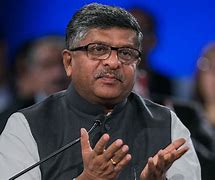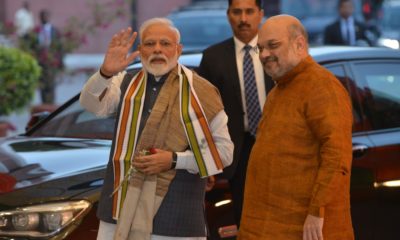World
Nadella uses personal phone to iterate Microsoft’s productivity

Mumbai: Redmond-based technology major Microsoft’s Indian-born chief executive Satya Nadella on Thursday showcased company apps on his personal Microsoft Lumia 950 XL to emphasise productivity enhancement via his company tools and services.
The chief executive, who is on a one-day visit to India to meet chief executives of other companies and key policymakers, while delivering his keynote address at ‘Microsoft’s Future Unleashed’ event in Mumbai being held on the ocassion of the company’s 25th anniversary, praised the energy, enthusiasm of Indians.
He confirmed that the Surface Pro 4 is coming to India by January. Microsoft launched the Surface Pro recently at an event held at its headquarters in the US.
The India-born CEO will also meet industry leaders like Mahindra Group chairman Anand Mahindra, Axis Bank head Shikha Sharma, Tata Starbucks CEO Avani Davda, and union Telecommunications Minister Ravi Shankar Prasad on Thursday.
Nadella will meet Prasad to discuss the company’s plan to provide broadband connectivity in villages.
Earlier, speaking at a dinner hosted in San Jose in honour of visiting Prime Minister Narendra Modi, Nadella said that Microsoft wants to “make things and make things happen”.
“We believe that low-cost broadband connectivity coupled with the scale of cloud computing intelligence that can be harnessed from data can help drive creativity, efficiency and productivity across governments and businesses of all sizes,” the first Indian-American Microsoft CEO said.
The company had earlier tested the low-cost broadband connectivity using the white spaces in Andhra Pradesh. White spaces is a technology that utilises unused television spectrum to deliver low-cost internet connectivity.
While the normal Wi-Fi has a range of about 100 metres, the white spaces (the 200-300 MHz spectrum band available) can reach up to 10 km.
Last month, Facebook co-founder Mark Zuckerberg visited India and addressed a Townhall type Q-and-A session at Indian Institute of Technology – Delhi.
World
Lockdowns in China Force Urban Communities to Defy Censorship and Vent Frustration Online

Shanghai’s rich middle class is leading a wave of online dissent over the strict and prolonged lockdowns imposed in various parts of the country. Chinese internet censorship is struggling as patience is wearing thin in many urban centers, coming up with creative forms of online protests.
Social Media Posts Revealing Lockdown Tension in Shanghai
Drawn-out lockdowns are nothing new in China as authorities insist with the nation’s zero-Covid policy since the start of the pandemic. Currently over This time around, however, metropolitan areas like Shanghai are increasingly difficult to keep quiet, given that its more than 25 million residents have seen weeks of total isolation along with food shortages and many other service interruptions.
Dozens of towns and reportedly over 300 million Chinese citizens have been affected by lockdowns of different severity. As expected, urban netizens have been most outspoken over their difficulties by finding creative ways to get around state censorship and bans placed on topics, news comments and spontaneous campaigns.
Shanghai residents have been using mobile proxies and hijacking seemingly unrelated hashtags to talk about healthcare issues, delivery failures and the overall severity of their situation. The “positive energy” that the Chinese government wants to transmit during the recent prolonged series of lockdowns does not come naturally to those counting food supplies and online censors are working hard to filter words, trending topics and undesired social media sharing.
WeChat groups and message threads are under constant monitoring. Posts questioning the zero-Covid approach have been quickly deleted, including by leading Chinese health experts like Dr. Zhong Nanshan. Video footage is soon censored and protests and investigations are quickly made to disappear.
Where this has not worked, officials have exposed banners with warnings and outright threats like “watch your own mouth or face punishment”, while drones have been patrolling the city skies. Yet, if anything, this has led to further tensions and unspoken confrontation with Shanghai’s educated and affluent middle class.
Creative Online Solutions Harnessing Civic Energy
Announcements by Chinese social media that they would be publishing the IP addresses of users who “spread rumors” have not helped either. Tech industry research has shown that much of Asia’s tech-savvy population has a habit of using mobile proxies and other privacy tools, quickly finding workarounds to browse the internet freely and talk to the world about the hottest topics.
The sheer volume of forbidden posts is already a challenge for the very censorship system, experts explain. Unable to track all trending hashtags, state workers overlook topics that speak about the US, Ukraine or other popular news. Linking human rights elsewhere to their situation, Chinese online dissidents establish their informal channels and “hijack” the conversation to share personal or publicly relevant information about the Covid suppression in their town.
Sarcastic and satirical posts still dominate. Others hope to evade the censors by replacing words from famous poems or the national anthem. One thing is certain – social media, when harnessed with the right creativity, has proven its ability to mount pressure on the government in even some of the most strictly controlled tech environments like China.























